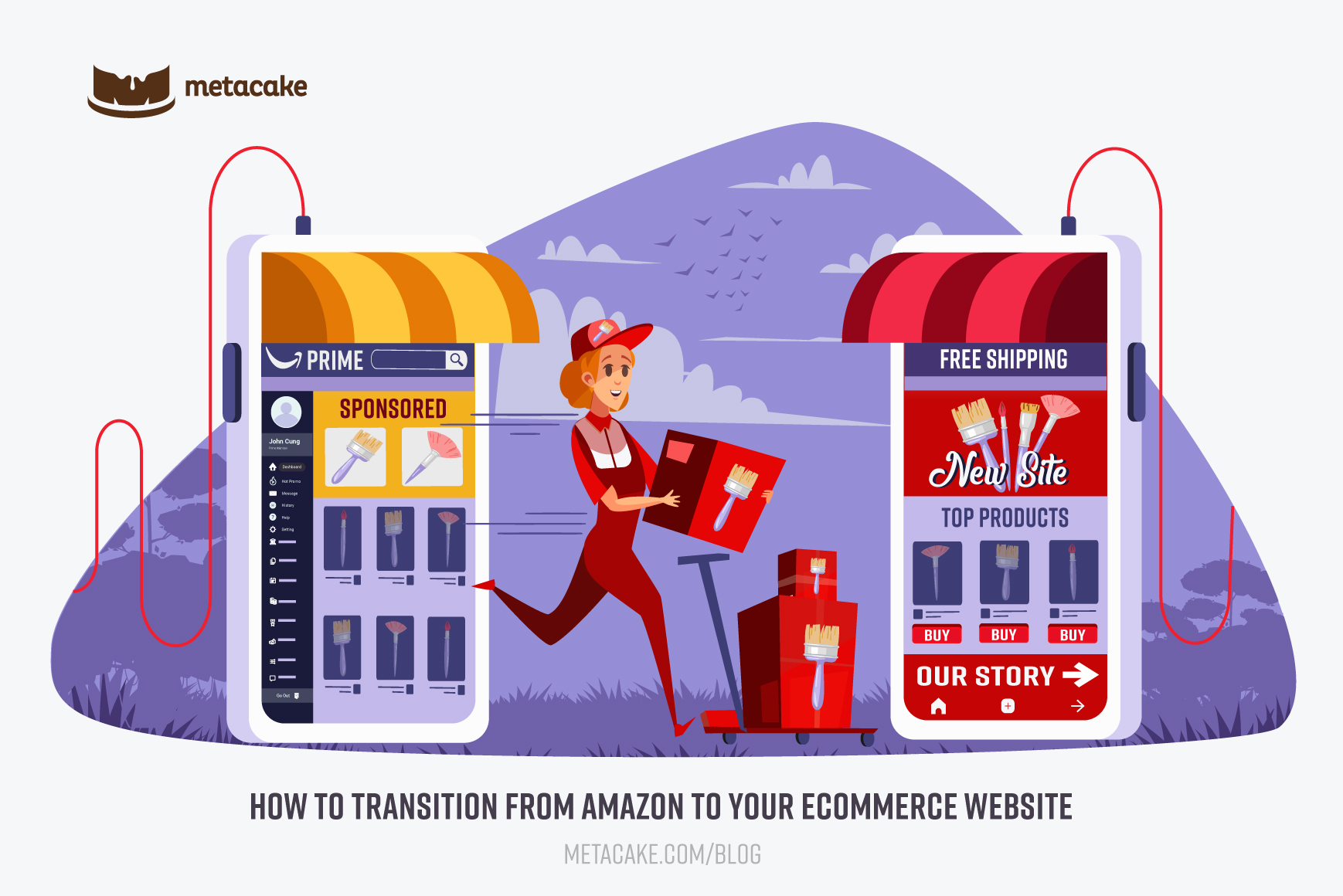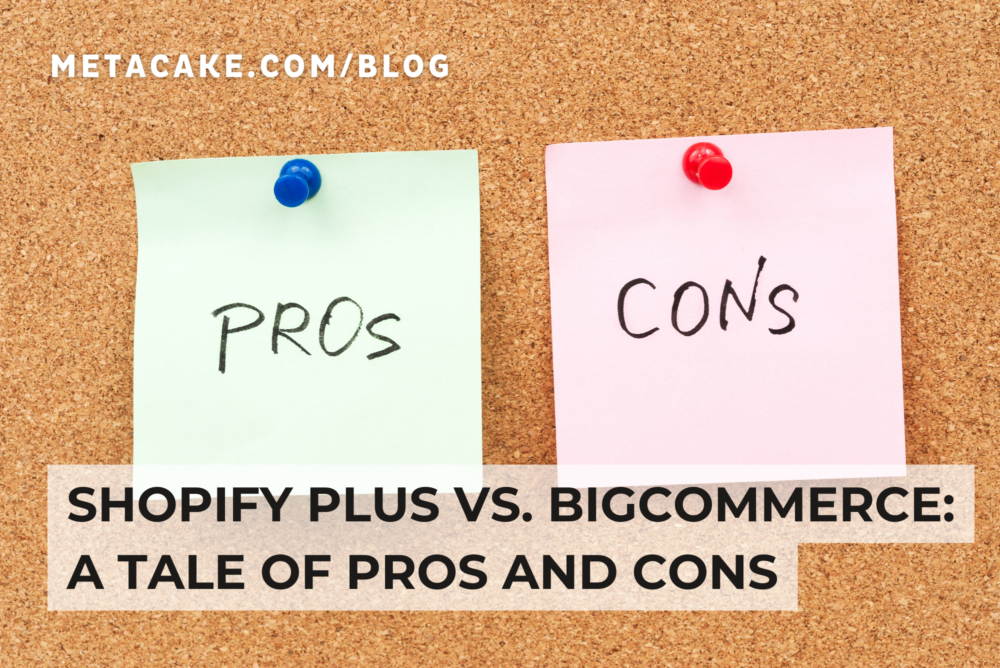
How to Transition from Amazon to Your Ecommerce Website
To be a healthy and successful ecommerce business, you need total control over your primary sales channel. This is key to a long lasting, profitable future in business online. If your primary sales channel is Amazon or any other marketplace, you may be generating revenue, but you don’t have total control. And that means your business is at risk.
Selling your products on Amazon is not bad or wrong, but it is risky to have it as your sole or primary source of business. In a previous post, we’ve explained that selling on Amazon is not truly “ecommerce”, but you still need both. Amazon is doing ecommerce, but the brands that sell on Amazon are effectively selling through a 3rd party wholesaler. To do ecommerce well, you need your own direct-to-consumer store, in addition to any selling you do on Amazon.
Wondering what to do if Amazon is currently your strongest source of revenue? In this article, we’ll explain how to transition from using Amazon as your primary sales channel to your own ecommerce website in order to set your business up for long term success.
Why Should Your Ecommerce Website Be Your Primary Sales Channel?
Your primary sales channel should be one that you own and therefore have total control over. The only channel where that’s possible is your own direct-to-consumer (DTC) website.
There are several reasons why that control is important and why your ecommerce website is the answer for your primary sales channel. First and foremost, it means you have direct contact with your customers. You own not only your customer data, but also your relationship with your customers. This allows you to build a strong brand with loyal fans and market to them as you see fit.
Owning your ecommerce site also provides agility across your business from operations to store experience to marketing and promotions. You control the content, the products, and the offers at all times, without restrictions.
What role should Amazon play in your ecommerce strategy?
There are 2 main benefits to Amazon as a sales channel:
- Revenue
- Discovery
Amazon has a built in customer base which allows you the opportunity to both expand your products to new audiences and generate significant revenue.
However, on Amazon and other marketplaces, you are at the mercy of their rules and restrictions. While marketplaces are great discovery engines and have their advantages, at the end of the day, the marketplace makes the rules, and these rules are always changing. One day those rules may no longer play to your advantage and your business could be seriously damaged or kicked off the platform entirely. Unfortunately it happens more often than you’d think.
This does not mean you should abandon Amazon or other marketplaces all together or downsize your business there. It simply means it’s time to look at investing the revenue you’re making on marketplace channels into an owned DTC site (your ecommerce website) and growing that channel to become your primary source of sales. When you do that, Amazon can serve as a great discovery engine that puts you in front of a lot of customers who are searching for your type of product. This can end up serving your DTC channel very well, if you strategize correctly.
Below is our simple guide to start transitioning your primary sales channel to your own website from Amazon or another marketplace.
How to Transition from Amazon to Your Website as Your Primary Sales Channel
1. Invest in DTC
While your business may have started through Amazon sales, don’t let it end there. Use the income that you’re generating from that marketplace to invest in building your own DTC experience on your website on a platform like Shopify Plus, BigCommerce enterprise, Woocommerce, or headless commerce solutions. If you already have your own site, it’s time to use revenue from your Amazon sales to improve your own site experience and then start marketing it.
2. Limit Your Product Line on Marketplaces
Make sure only your basic or entry level products are available on Amazon or other marketplaces. Only sell your full product line on your website. There are a number of ways to do this. For example, if your product comes in multiple colors, fragrances, flavors, etc, you might only offer one or two options on Amazon and the rest exclusively on your site. If your product has complementary products, you might offer only the hero product on Amazon and its complements on your site.
Whatever your strategy, if you have certain products that are exclusively sold on your own website, customers have a reason to come to your store for their purchase, rather than sticking to Amazon.
3. Offer Free and Fast Shipping
Amazon Prime has completely conditioned consumers to get what they want quickly without paying for shipping. Without offering quick (and preferably free) shipping, it is difficult to attract customers away from the marketplace to your owned ecommerce website. If you can’t afford to offer free shipping for all orders, you could at least have a free shipping tier promoted across the top of your site (for example, free shipping over $50).
4. Offer Promotions
Be sure to offer unique promotions and discounts on your website that aren’t available elsewhere. You may need to do this using discount codes to not violate Amazon’s policies, but this is another great way to attract customers to come to your website rather than to Amazon to shop.
One easy way to let customers know about promotions or discounts is to include a flyer in their shipment that encourages them to shop your site with the discount code you provide. You should also include discount codes in your Google Search ads and your organic site listing. If your product is popular enough, odds are your listing or ads will show up in a Google search right next to an Amazon listing for your product. In that case, a discount code will be the easiest way to pull a customer to your site rather than Amazon.
5. Drive Traffic to Your Site
Building your DTC site experience isn’t enough. You’ll need traffic flowing to that site, which most businesses need to pay for, especially at the beginning. This means it’s time to start marketing heavily for your store. Use paid ads on social channels, Google Search, YouTube, and more to drive traffic to your fantastic ecommerce store experience, where visitors will see everything we’ve mentioned up to this point— exclusive products and discounts, helpful content, offers for shipping, etc.
Just keep in mind that spillover will occur because inevitably some site visitors will hop over to Amazon to purchase. With that in mind, when you’re running paid ads, you should see your increased revenue on your marketplace channel as well.
6. Offer an Amazing Warranty
If someone purchases your product on Amazon, they will likely have a short window where they can return it (usually 30 days), but after that, they’re out of luck. Use that to your advantage and offer an excellent warranty that customers can only access on your site. Even when a customer purchases from a marketplace or other third party, they will need to come to your site to register their product and start their warranty replacement. This is a helpful and secure way to access customer data and then you’ll be able to market to them in the future.
Diversifying Is Worth the Investment
The goal is to make your ecommerce store your most important channel, rather than a volatile marketplace that you can’t control. A diversified strategy is always the smartest way to achieve healthy growth in your business, but your DTC channel needs to be at the top.
Remember, don’t stop doing business on Amazon or other marketplaces! You might not even need to shrink your business on these channels. The goal is to invest in growing your ecommerce channel over time to balance out your marketplace sales and eventually become the stronger channel. Once your own ecommerce store has eclipsed your marketplace, you will be in a much healthier position for long term business success.


